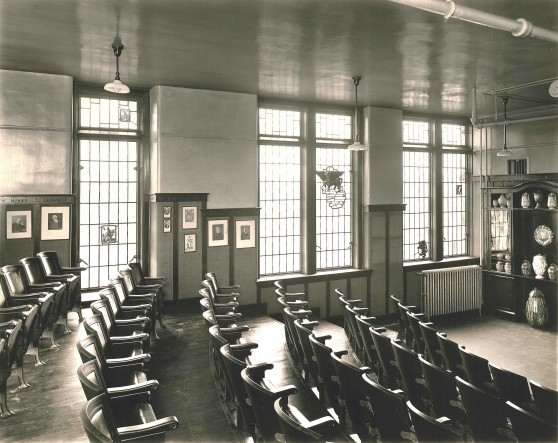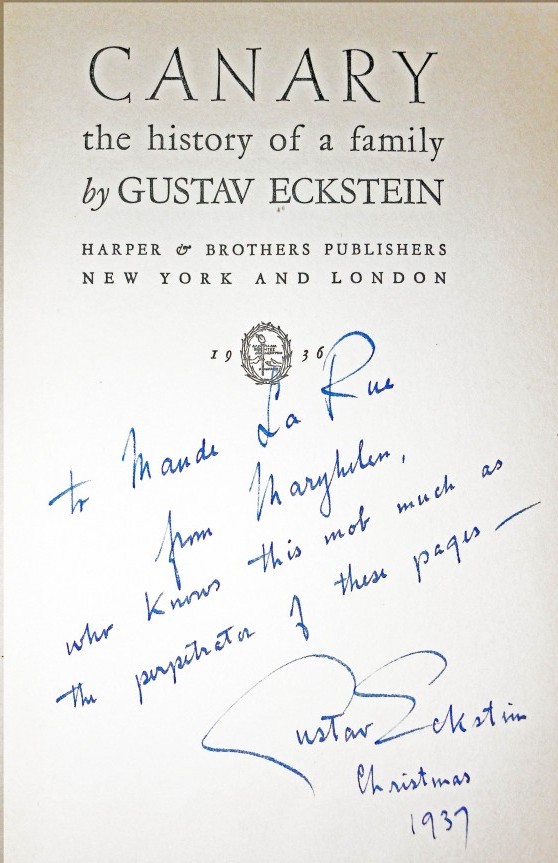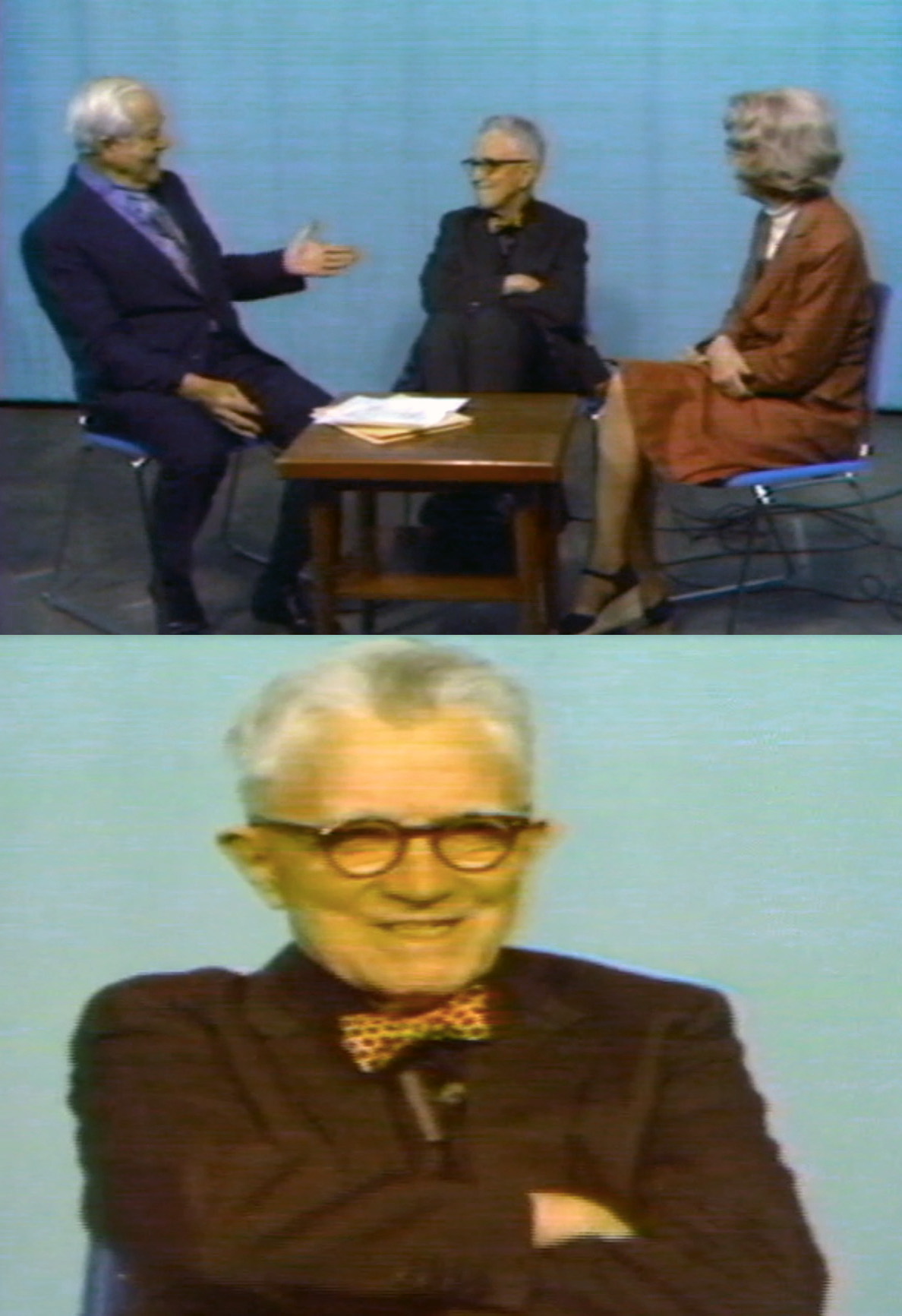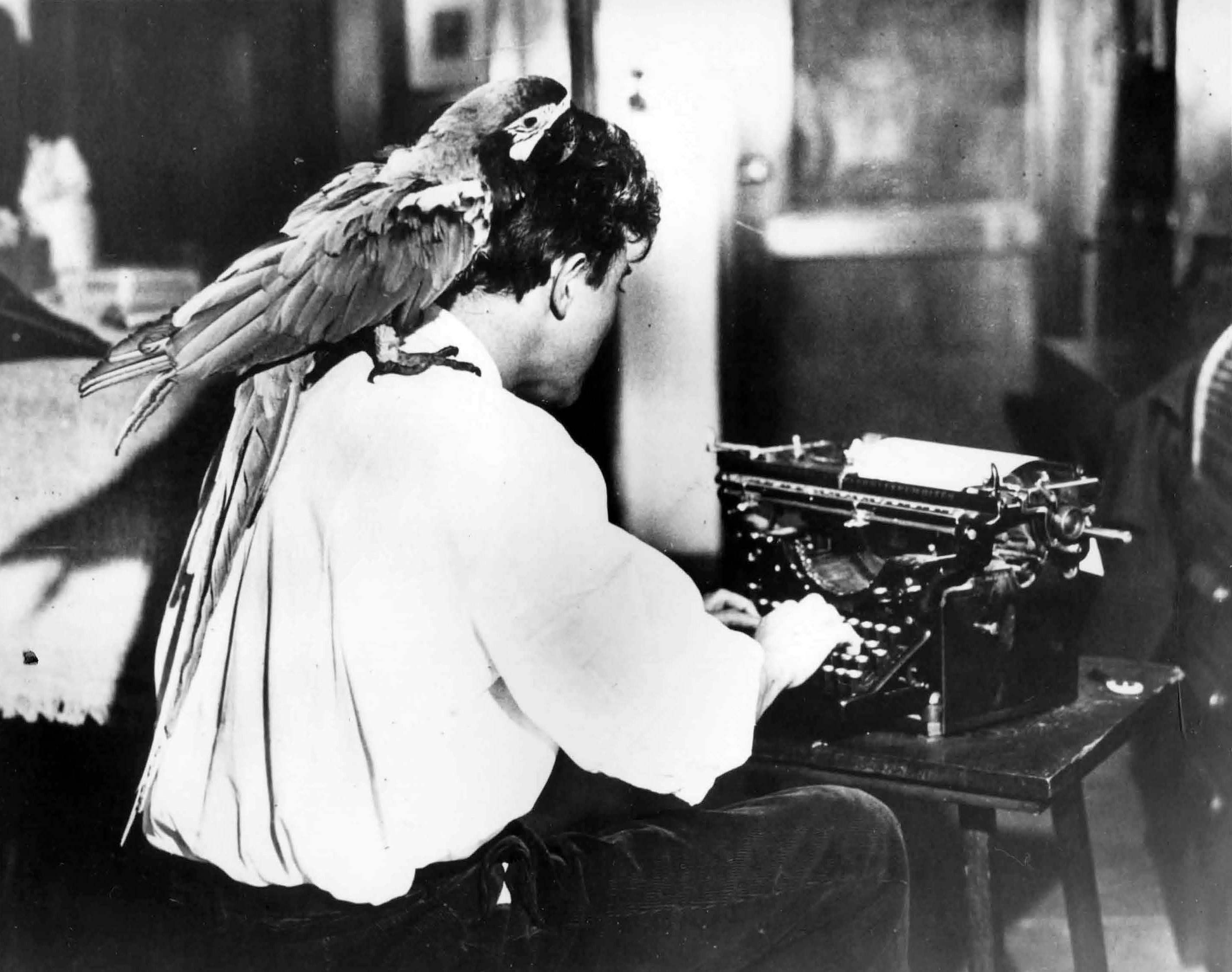By: Stanley Block, MD
 At the northwest corner of Eden Avenue in Cincinnati, Ohio, Dr. Christian R. Holmes built his “new” College of Medicine which opened its doors to students for the first time in 1917.
At the northwest corner of Eden Avenue in Cincinnati, Ohio, Dr. Christian R. Holmes built his “new” College of Medicine which opened its doors to students for the first time in 1917.
In the 40’s the Department of Physiology occupied the south end of the second floor of the building. The corridor leading to the department contained wood-carved panels depicting historical medical scenes. Dr. Martin Fischer, chairman of the department, lectured from his small, elegant auditorium to the left of the corridor. The light, filtered through stained glass windows illuminating the cabinetry and apothecary jars that flanked the lectern. On the right of the corridor were the physiology laboratories. The overseer of the lab was Dr. Gustav Eckstein (October 26, 1890 – September 23, 1981).
Dr. Gus was a slight man with a shock of unruly hair atop a too large head; and he had a floppy, hand-tied bow tie beneath his chin. His face was thin with high cheek bones and a prominent nose. His lower jaw jutted slightly forward. It was not a look of belligerence; rather, he seemed always to be poking forward. And, indeed he was. He was curious about everything; and everything aroused his curiosity.

Dr. Martin Fischer’s Lecture Hall, later used by Dr. Eckstein(Note: Some of the stained glass windows pictured as well as the Cantagalli Pharmacy
featured at the front of the Lecture Hall (partially pictured on the far right)
are now on display in the Winkler Center’s Stanley J. Lucas Board Room.
There was another characteristic of Dr. Gus. I have seen the behavior a few times since. I saw it for the first time in him. As he spoke of some new research finding; or if he suddenly found a new perspective regarding some old idea, he would become so energized that he was literally unable to sit still. He would leap from his chair (usually it was a high lab stool), and pacing around the room gesticulating wildly, his voice rising an octave he would allow the new insights to tumble out.
He was a dentist, a physician, a scientist, a teacher, a philosopher, and a writer. He wrote for The New Yorker, The Saturday Evening Post, Harper’s, and the Atlantic Monthly. He was one of the “Algonquin Roundtable” along with Alexander Woolcott, Dorothy Parker, Harold Ross, and the others. His Broadway play “Christmas Eve” was a flop; but his books were not. His definitive biography of Hideyo Noguchi (who, along with Dr. J. E. Moore identified the spirochete of Syphilis in the brains of patients dying of Paresis) was a best seller in 1969.

Hallway between the Physiology Lecture Hall (doors on the left)
and Laboratory (right-hand side, not pictured)
His book “Lives” contains the stories of “little folks; people and animals that he knew: a janitor at the College of Medicine; a cat that told time; a waiter at the old Mecklenberg’s Beer Garden. The entrance to his laboratory was unique. The door was always closed. In front of the door was a screen door. There was a doorbell beside the screen door with a large sign reading “Do Not Enter. Ring The Bell!!”. When you rang it, and waited, Dr. Gus would eventually appear wearing a large, straw farmer’s hat.
The reason for all this was the fact that a small flock of free-flying canaries lived in his lab. He did not want them loose in the college building; hence the screen, the sign, and the doorbell. And when they became excited, he wanted to spare himself their droppings; hence the straw hat, as well as the newspapers that were spread over all the surfaces in the lab including the piano which he kept there to play when the spirit moved him.
In his book “Canary”, he wrote about those delightful creatures with whom he lived and worked. It is a masterpiece in revealing a special relationship between man and animal told with sensitivity and humor.

Autographed Title Page of Canary: The History of a Family
(This photo also serves as a link to the Winkler Center’s book
and recording collection on Dr. Eckstein)
In his last published work, “The Body Has a Head”, Dr. Eckstein wrote:
“I have taught in a medical school, a city hospital and its clinics across the street, my subject human physiology, the everyday operations of the body. By the curriculum this was crammed into four months of one semester. Too brief, although the brevity added tension, helped at least the teacher to realize again that the little that one knows is always making one wish one knew more, making one realize how fast detail of knowledge changes, how what one studied yesterday could seem wrong today, and how it escapes one, needs to be relearned, to escape again.”

Above:
From left to right: Benjamin Felson, MD, Gustav Eckstein, MD, and Martha Keegan
Below: Gustav Eckstein, MD
1977
(The interview is a part of the Winkler Center Oral Histories collection and
is available for download by clicking on the photo above)
Gus Eckstein wrote this with the passion that endowed every facet of life – the passion, that is, to learn; the wish to know more; the realization that learning is dynamic, never static. The well out there runs deep. Infinitely deep. The adventure is not reaching the bottom, impossibility. The adventure is the inexhaustible dipping.. As my teacher, my colleague, my friend and mentor, Dr. Gus taught me this truth.
For more information on Dr. Eckstein or for a tour of the Winkler Center, please call 558-5120 or email chhp@uc.edu to schedule an appointment.


